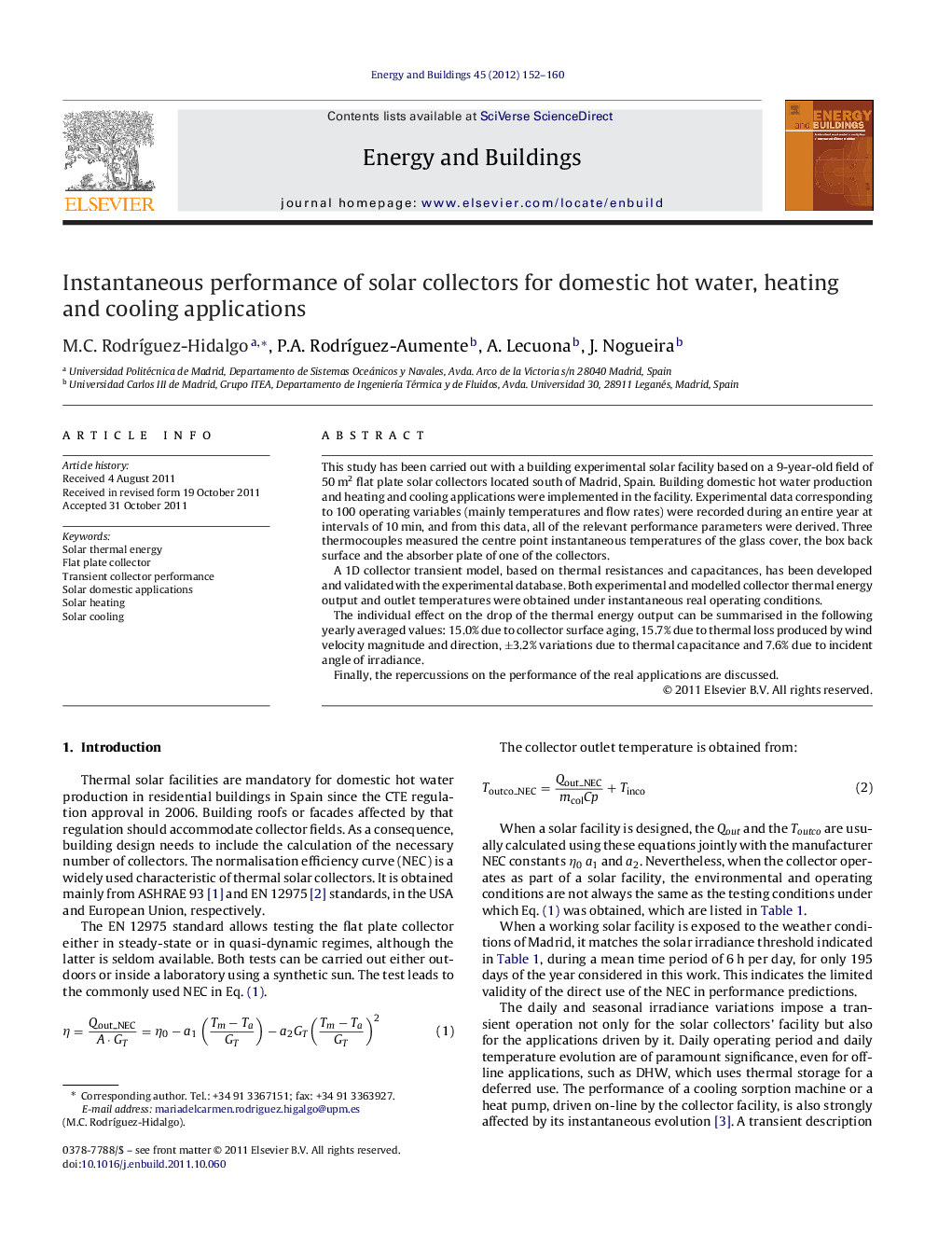| Article ID | Journal | Published Year | Pages | File Type |
|---|---|---|---|---|
| 263995 | Energy and Buildings | 2012 | 9 Pages |
This study has been carried out with a building experimental solar facility based on a 9-year-old field of 50 m2 flat plate solar collectors located south of Madrid, Spain. Building domestic hot water production and heating and cooling applications were implemented in the facility. Experimental data corresponding to 100 operating variables (mainly temperatures and flow rates) were recorded during an entire year at intervals of 10 min, and from this data, all of the relevant performance parameters were derived. Three thermocouples measured the centre point instantaneous temperatures of the glass cover, the box back surface and the absorber plate of one of the collectors.A 1D collector transient model, based on thermal resistances and capacitances, has been developed and validated with the experimental database. Both experimental and modelled collector thermal energy output and outlet temperatures were obtained under instantaneous real operating conditions.The individual effect on the drop of the thermal energy output can be summarised in the following yearly averaged values: 15.0% due to collector surface aging, 15.7% due to thermal loss produced by wind velocity magnitude and direction, ±3.2% variations due to thermal capacitance and 7.6% due to incident angle of irradiance.Finally, the repercussions on the performance of the real applications are discussed.
► Solar plant's performances are usually available for stationary and high radiation conditions. ► We developed an all conditions transient model for a collector's field. ► The model is experimentally validated in a real plant. ► Transient performance of solar DHW, heating and cooling under real working conditions are evaluated. ► Influence on energy output and temperature of wind, aging, and others variables, is quantified.
